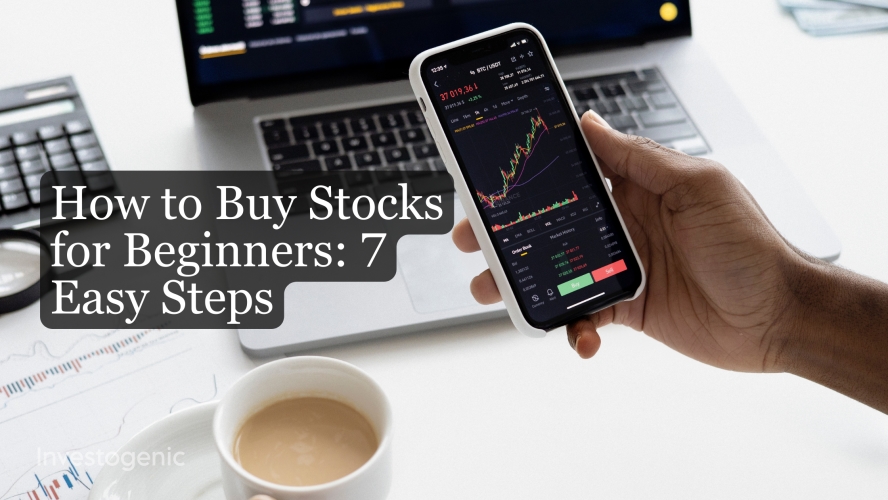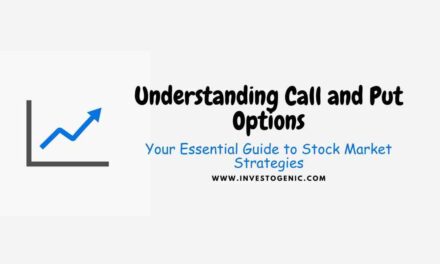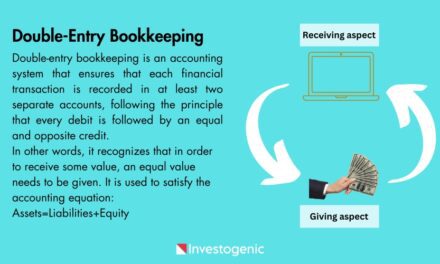
How to Buy Stocks for Beginners: 7 Easy Steps

How to Buy Stocks for Beginners: If you are planning to invest in the stock market, then you have to understand what the investment process will be here. As we know, investing is a time-tested way of putting your money to work for you, thereby earning more out of it. By investing your money regularly, you may be able to grow it manifold over time. Hence, it is important to start investing as early as possible. Apart from this, the stock market is also a good place to start investing.
To get returns from the stock market, you should invest in it with complete planning. It covers all you need to know about different types of stocks, investment strategies, risk management, and how the stock market works. This post discusses these strategies for investing in the stock market, which can help with investing in the stock market.
Set Financial Goals
Whenever you plan to invest somewhere, it is essential that you set the objectives and goals of your investment. In these goals, decide whether you are looking for short-term profit, long-term growth, or dividend income because your goals will influence your investment choices.
By fixing these goals, you will be able to choose better stocks for your investment so that you can get returns that meet your goals.
Research and Choose Stocks
Next, research the companies in which you are interested in investing. View their financial status, earnings reports, industry trends, and competitive position. Consider factors such as company size, growth potential, management quality, and overall market conditions. You can use financial news websites, stock screeners, and research reports for information.
Open a Brokerage Account
Investing in the stock market is done through stocks, and you will need a brokerage account to buy stocks. For this, choose a reputed brokerage platform that suits your needs. Consider factors such as trading fees, account minimums, research tools, and ease of use. Popular online brokerage platforms include Charles Schwab, Fidelity, TD Ameritrade (now part of Charles Schwab), and others.
Follow the steps to open an account with your chosen brokerage. This typically involves providing personal information, verifying your identity, and depositing funds into your account.
Deposit Funds
Transfer money into your brokerage account. This will be the capital you use to buy stocks.
Place an Order
When you log in to your brokerage account and navigate to the trading platform, you will find two main types of stock orders:
- Market Order: This buys the stock at the current market price. It guarantees execution but may not give you the exact price you see due to price fluctuations.
- Limit Order: This lets you specify the maximum price you are willing to pay for a stock. This order gives you more control over the price at which your trade is executed. It may not execute if the stock price does not reach your specified limit.
Monitor Your Investments
Once you’ve purchased stocks, keep track of their performance. You can use your brokerage account’s portfolio tracking tools or external resources to monitor market trends, company news, and your overall investment strategy.
Diversify Your Portfolio And Reduce Risk
Don’t put all your apples in one basket. This strategy is very effective in the stock market. This means that instead of putting all your funds in a single stock, consider diversifying across different companies and industries. Diversification helps spread risk and reduce the impact of poor performance on any one stock.
Stock market investing is an ongoing learning process. Stay informed about market trends, economic developments, and changes in the companies you’re invested in. Continue your education so that you can make wise selections.
Also Read: How Do We Read the Balance Sheet of the Company?
FAQs
What Is the Difference Between a Full-Service and a Discount Broker?
Full-service brokers and discount brokers are two different types of brokerage firms that offer varying levels of services and support to investors. The primary differences between them are listed below:
| Particulars | Full-Service Broker | Discount Broker |
| Services and Support | These brokers provide a comprehensive range of services, including investment advice, research reports, financial planning, and portfolio management. They often have dedicated financial advisors who work closely with clients to develop personalized investment strategies based on their financial goals and risk tolerance. | Discount brokers focus on executing trades and providing basic investment tools. While they may offer some research resources, educational materials, and customer support, they generally don't provide the same level of personalized advice and financial planning as full-service brokers. |
| Suitability | Full-service brokers are suitable for investors who prefer guidance and are willing to pay higher fees for expert advice. | Discount brokers are suitable for investors who are comfortable making their own investment decisions and want to minimize trading costs. |
| Costs and Fees | Higher commissions or transaction fees | Lower commissions or transaction fees for trades |



























